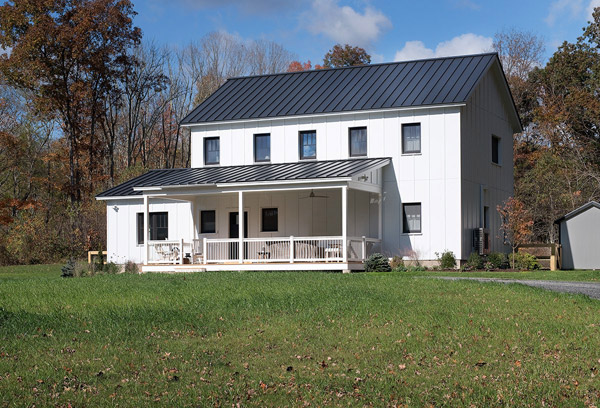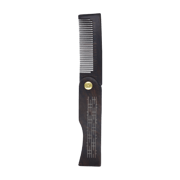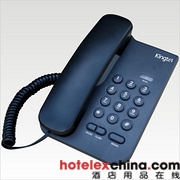
In recent years, modular and prefab homes have shed any remaining stereotypes or preconceived notions buyers may have had about the potential for the building typology. Fresh, modern designs and, often, a compelling sustainability story have been capturing attention among everyone from architects to homeowners.
These attributes come alongside what many have known for years, which is that factory-built construction brings a handful of immediate and long-term benefits. Among them: a controlled environment that eliminates the weather factor; panelized systems that ensure a tight envelope while maximizing accuracy and materials; improved ergonomics for the workforce; and the capability to construct the home at the same time the site is being prepped, among others.
Meanwhile, design options have expanded to include everything from two-story traditional Colonials to a single-level Spanish-style homes to modern glass boxes. In single-family housing, modular homes are even popping up in locales as posh as Martha’s Vineyard, in Massachusetts, and the Hamptons, in New York.
A study conducted by the National Association of Home Builders’ Building Systems Council revealed that, for a 2,600-square-foot home, prefab walls can save 66.5 hours of labor compared to stick built, Builder reported. Bringing labor savings, replicability and precision, modular components are also becoming increasingly popular for multifamily projects as well as for hotels.
Lessons from the factory
Though traditional construction can’t fully replicate the efficiencies brought by factory building, there are some best practices that traditional builders can apply to help ease the labor burden, increase accuracy and save time.
Use highly trained crews
Unity Homes invests in skilled labor and ensures each crew member knows exactly what their job entails, just as if they were on an automobile assembly line. “We have standard operating procedures for performing the best practices we’ve [developed]?over the years,” says the company’s operations lead, Andrew Dey. Unity Homes, a five-year-old offshoot of Bensonwood Homes in Walpole, N.H., specializes in prefab homes that are energy-efficient, healthy and long-lasting.
Leverage technology
Offering a detailed overview of the home, 3-D modeling software provides an opportunity to plan, pinpoint errors and identify and locate products and materials.
For its manufacturing, Unity Homes feeds computer modeling data into CNC machines to cut materials, ensuring accuracy while optimizing resources. While builders can’t have giant CNC machines on site, many building material dealers offer pre-cut framing packages using that same technology.

Unity Homes in the factory Credit: Unity Homes
For example, dealers that utilize Weyerhaeuser’s NextPhase Site Solutions to create fully panelized floor components can deliver them to the job site in pre-cut and pre-labeled job packs. Detailed instructions guide installers on what piece goes where.
Work as a team
Unity Homes meets with its full team early in the process, including key subs who will be performing the site assembly. “We build things twice—once virtually in 3-D on the computer and then the actual build,” Dey says. The plumbing, electric, HVAC and other subs meet with Unity to go over the model and talk through where the ducts and utilities will run, or where clearances might be needed. “If those things are worked out in the model ahead of time, there tends to be much less possibility for disruption and conflicts on site.”
Ensure team members share the vision
Whether it’s high-performance building techniques or proper installation, subs and other partners must understand and be on board with the way your buildings are designed and constructed — and the level of quality you are aiming to achieve.
Aaron Holm, CEO of Blokable, has found that to be the case with his company, which offers manufactured and prefinished building module “bloks,” a versatile system that assembles quickly and can be adapted for a range of layouts and uses. “[It’s important to] align with the right general contractors and architects that want to celebrate the design of the system.”
Blokable ships its components as plug-and-play, which reduces build time. The company has designed its vertically integrated system from the ground up. “We’re not doing construction; we’re doing advanced manufacturing,” Holm says.
Limit change orders
Another advantage modular builders have is that, for most, last-minute changes are less likely or even out of the question — once panels and pods are completed, changing framing or other structural elements would be costly. Modular builders have contracts outlining the fixed price and the cost for changes later.
Unity Homes also heads off changes by helping buyers make confident choices up front, leveraging the aforementioned modeling software to show how all of the pieces come together to create their finished home. The company also encourages clients to tour existing projects.

A Unity Homes project in application Credit: Unity Homes
Follow lean principles
Lean principles are typically used to reduce waste and improve efficiencies in manufacturing environments, but many of the core concepts can be applied to the job site. For example, using a shadow board to store job site tools can help to reduce time spent hunting for missing equipment.
Unity Homes uses lean principles not just in its factory, but also once components get to the jobsite by giving team members a voice and the freedom to use it. “Part of lean is to empower everyone on a team to make suggestions for improvement,” Dey says.
Learn from the best
Before founding prefab passive house manufacturer Ecocor, Chris Corson traveled the world, from Scandinavia to Japan, cherry-picking the best ideas and philosophies and adapting them to the U.S. market. He layered on top of that Passive House principles, responsible material choices, lower embodied energy and other attributes.
“We’re saying, ‘We’re going to build you the best house you can possibly buy, [and] we’re going to build it out of best materials we can possibly buy,’” Corson says. “We’re building best product available…. That benefits everybody: us as a company, the end user, the environment and the economy.”
Whether the project is modular or site-built, every homebuilder can benefit from that attitude. “If you have the opportunity to create something, you should create it in the best way possible,” Corson says.









Service Hotline
Work Time:Mon-Fri 9:00-18:00
UTC+8

Sinoexpo Digital Platform
Copyright 2006-2025 Shanghai Sinoexpo Informa Markets International Exhibition Co., Ltd. All rights reserved
沪ICP备05034851号-77
 沪公网安备 31010402000543号
沪公网安备 31010402000543号